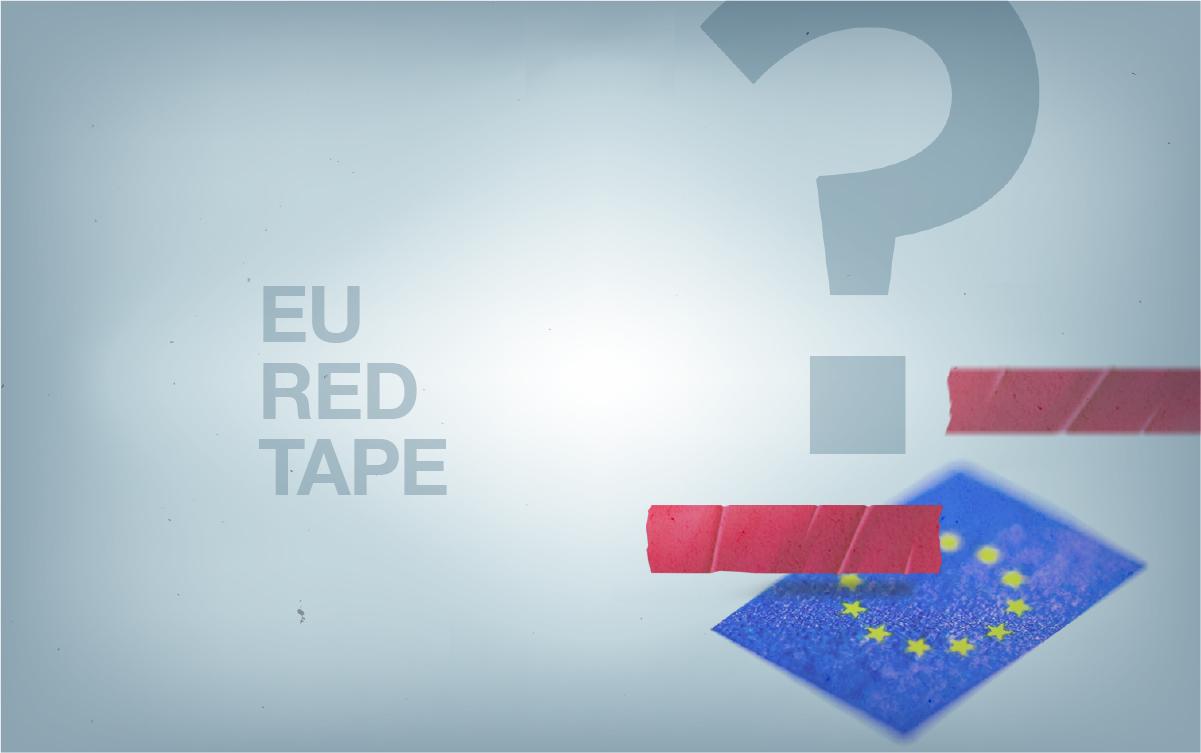EU Red Tape: An Endless Struggle or a Solvable Problem?
06 February 2025

Simplifying EU legislation is a Sisyphean task. Who remembers SLIM, the Stoiber-led high-level group on administrative burdens, and the “one in, one out” approach by Jean-Claude Junker in 2014? They all promised to cut red tape but fell short of delivering meaningful change. The current European Commission’s renewed focus on the issue in the Competitiveness Compass announcing the Communication on Implementation and Simplification is commendable. Member states and businesses are also calling for serious action to abridge the legal framework. However, given the results of previous efforts, can we assume that current efforts will be more successful? The approach of simply decreeing ‘Thou Shall Be Simple’ will not work. If the current rules are to be simplified, it is reasonable to ask why they were made so complicated in the first place? Is this a systemic problem of lawmaking in the EU? Or maybe, it is the result of the political orientation of legislators, who prefer to design laws prescribing their own vision of the ideal organisation of society? Without addressing the causes, it will be difficult to find a remedy.
The EU is responsible for intrinsically complex policy areas like financial markets, the environment, or digital issues that require nuanced and sophisticated regulations. It leads to details that address every contingency. The EU’s multi-layered governance structure and legal diversity among member states add to this complexity. While this makes lawmaking challenging, it should not be considered as the only explanation of overregulation. There was a deliberate political choice made to rely on prescriptive regulations to drive transformation into a green and digital economy. Rather than empowering markets to facilitate change, it has focused on setting meticulous rules and standards. This contrasts sharply with the approach taken by the United States, where market forces play a greater role in guiding economic shifts. Since the adoption of the Lisbon Strategy in 2000 – which aimed to make Europe “the most competitive and dynamic knowledge-based economy in the world”, – the EU has suffered slower growth than the American economy. Unlike the EU, the US has not relied on formal strategies or high-profile reports, such as made by Sapir, Monti, or Kok (who remembers them?), and recently, Letta and Draghi, to steer economic growth. All of them contained valid suggestions to reverse the trend. The Inflation Reduction Act (IRA) in the United States came as a wake-up call for Europe. The US has adopted an approach to reduce the costs of the green transition for businesses that stands in direct contrast to the EU’s target-setting, followed by detailed regulations guiding business performance with significant compliance costs.
The EU’s key objectives – advancing the green transition, digital transformation, energy security and strategic autonomy – remain valid and should not be given up. However, ensuring that these goals are met without unnecessary regulatory burdens is critical. A careful balance must be struck between the benefits of regulation and the costs of compliance. This is particularly evident in the case of SMEs, which often bear a disproportionate burden. It regularly happens despite the Commission’s efforts to consider their views via the SME filter on the “Have Your Say” portal. For example, the Carbon Border Adjustment Mechanism (CBAM) applies even to small-scale imports worth even only €150, with only a minimal climate impact but that still require considerable and costly documentation. In such situations, the administrative costs for small importers can be overwhelming, outweighing the environmental benefits of compliance.
An additional reason for the complexity of European regulations is that policymakers and the institutions that design these frameworks are not directly involved in their compliance. Bureaucracies – as explained by famous French sociologist Michel Crozier – follow their own logic: ensuring that aims are reached through the use of available and effective measures from their point of view, ensuring that institutions can feel safe even in the case of failure. This is followed by the establishment of layers of authorising bodies overseeing compliance, leading to inefficiencies and excessive burdens. It also results in cumbersome regulations, effective in achieving their objectives, safe for controlling institutions, but complicating the lives of businesses.
To truly achieve simplification, a paradigm shift is needed. Instead of designing regulations primarily from an institutional perspective, policymakers must place the affected users – businesses and citizens – at the centre of the process. A useful reference here is the Paperwork Reduction Act in the United States, which obliges to measure the time and effort required for compliance. To ensure that regulations remain effective without creating excessive barriers, the EU must integrate ex-post impact assessments into its legislative framework. Mandatory reviews of implementation and compliance costs across member states and at the EU level should become standard practice. The announced Omnibus Simplification Package (the name itself is intimidating, implying intricacy) is rather a one-time correction of extremely complicated obligations that were systematically and intentionally introduced previously. Simplification should not be merely about reducing the volume of regulations or making legal texts shorter and clearer. Instead, the focus must be on achieving policy goals with compliance requirements that are proportionate to the benefits they bring.
ENJOYING THIS CONTENT?











